
- The Historical Decline of the Gothic Quarter: A Timeline of Change
- Revitalization Efforts in the Gothic Quarter: From Neglect to Renewal
- Cultural Significance of the Gothic Quarter: Preserving Heritage Amidst Change
- Gothic Quarter Architecture: A Blend of History and Modern Revitalization
- Impact of Tourism on the Gothic Quarter: Balancing Preservation and Growth
- Local Initiatives for the Revitalization of the Gothic Quarter: Community Engagement and Development
The Gothic Quarter, with its labyrinthine streets and rich historical significance, has long been a focal point of Barcelona's cultural identity. However, this iconic neighborhood has experienced periods of decline, leading to concerns about its preservation and the erosion of its unique character.
In recent years, efforts have been made to rejuvenate the area, balancing modernity with tradition. The exploration of the theme Gothic Quarter: Decline and Revitalization sheds light on the challenges faced and the strategies employed to breathe new life into this storied district, making it a vibrant space for both locals and tourists alike.
The Historical Decline of the Gothic Quarter: A Timeline of Change
The historical decline of the Gothic Quarter can be traced through several key events that marked its transformation over the centuries. By the late 19th century, the area began to show signs of neglect as industrialization took hold in Barcelona, leading many residents to migrate to burgeoning neighborhoods. This shift resulted in a significant depopulation and a waning appreciation for the district's historical architecture.
Post-World War II, the Gothic Quarter faced further deterioration as economic challenges plagued the city. The influx of tourists and the rise of commercial interests often overshadowed the preservation of its cultural heritage. The following timeline highlights some of the critical changes during this period:
- 1930s-1940s: Economic decline and urban decay lead to increasing poverty in the area.
- 1960s: Boom in tourism brings temporary revitalization but commercializes local culture.
- 1980s: Local government launches preservation efforts, yet many buildings remain in disrepair.
- 1990s: Urban renovation projects begin to restore historical sites, sparking interest in the Gothic Quarter.
By the early 21st century, a renewed focus on heritage conservation emerged, driven by both local residents and city officials. This movement not only aimed to restore the physical structure of the Gothic Quarter but also sought to revive its cultural essence, bridging the gap between its storied past and a vibrant future. Today, this historic neighborhood stands as a testament to resilience and revitalization, attracting a diverse array of visitors eager to experience its unique charm.
Revitalization Efforts in the Gothic Quarter: From Neglect to Renewal
Revitalization efforts in the Gothic Quarter have focused on balancing the historical charm of the area with contemporary needs. Local authorities have implemented a series of initiatives aimed at improving urban infrastructure while ensuring the preservation of its architectural heritage. These strategies have included enhancing public spaces, limiting vehicle access, and promoting pedestrian-friendly zones, which have reinvigorated the neighborhood's atmosphere for both residents and visitors.
One key aspect of this revitalization has been the cultural programming that encourages community engagement and celebrates local traditions. Events such as street fairs, art exhibitions, and live performances not only attract tourists but also foster a sense of belonging among residents. The collaboration between local artisans and businesses has further enriched the cultural landscape, creating a vibrant marketplace that reflects the Gothic Quarter's unique identity.
- Community Workshops: Initiatives aimed at involving locals in the decision-making process for urban planning.
- Restoration Grants: Financial support for property owners to restore and maintain historical buildings.
- Green Spaces: Development of parks and gardens to enhance the area’s natural beauty and promote biodiversity.
As a result of these revitalization efforts, the Gothic Quarter has transformed from a state of neglect to a thriving hub of activity. With careful planning and community involvement, the neighborhood not only preserves its rich history but also embraces the future, ensuring that it remains a vital part of Barcelona's cultural tapestry for generations to come.
Cultural Significance of the Gothic Quarter: Preserving Heritage Amidst Change
The cultural significance of the Gothic Quarter extends beyond its stunning architecture and historical landmarks. It embodies the essence of Barcelona's identity and serves as a living museum that showcases the city’s evolution over centuries. The ongoing efforts to preserve its unique character amidst urban changes reflect a commitment to honor the past while fostering a vibrant future.
Preservation initiatives in the Gothic Quarter focus on maintaining its architectural integrity and promoting cultural activities that engage both locals and visitors. Key strategies include:
- Community Involvement: Encouraging resident participation in heritage conservation efforts ensures that the voices of those who live in the quarter are heard.
- Educational Programs: Workshops and guided tours foster a deeper understanding of the area’s historical significance among tourists and students.
- Artistic Collaborations: Partnerships with local artists and creatives help revitalize public spaces through art, enhancing the neighborhood's cultural appeal.
The Gothic Quarter's resilience is evident in its ability to adapt to modern demands while preserving its historical essence. This balance is crucial for ensuring that the area remains a dynamic hub for cultural exchange, where traditions are celebrated and contemporary expressions of art thrive. Initiatives aimed at preserving the quarter's distinct identity contribute to a richer cultural tapestry that benefits the entire city.
As urban development continues to shape the landscape of Barcelona, the Gothic Quarter stands as a reminder of the importance of heritage preservation. The commitment to maintaining its unique charm illustrates how cultural significance can coexist with change, creating a space where history and modernity enrich one another. This ongoing dialogue between past and present is essential for the quarter's future vitality.
Gothic Quarter Architecture: A Blend of History and Modern Revitalization
The architecture of the Gothic Quarter serves as a stunning testament to its rich history, featuring a blend of medieval structures and modern interventions. Iconic elements such as narrow alleys, arched doorways, and ornate facades tell the story of centuries past while inviting the contemporary world into their folds. This unique juxtaposition enriches the neighborhood, creating a visual narrative that captivates both locals and tourists alike.
As revitalization efforts continue, new architectural projects aim to respect the historical context while introducing modern amenities. The careful integration of contemporary design with traditional elements has resulted in a harmonious coexistence that enhances the area's charm. Notable examples include the restoration of public squares, where sleek seating arrangements are juxtaposed against ancient stone walls, allowing visitors to appreciate both the past and the present.
Moreover, the Gothic Quarter's architecture inspires a sense of place, often hosting various cultural events that celebrate its heritage. These events highlight the neighborhood's adaptability, showcasing how modern revitalization can breathe new life into historical contexts without erasing their significance. The architecture itself becomes a backdrop for performances and gatherings that strengthen community bonds and foster engagement.
In summary, the Gothic Quarter's architectural landscape is a dynamic interplay between history and revitalization. As the area evolves, it preserves its unique identity while simultaneously embracing change, ensuring that it remains a beloved cultural hub within Barcelona. Through thoughtful planning and community involvement, the neighborhood continues to attract visitors who are eager to explore its rich tapestry of historical and modern influences.
Impact of Tourism on the Gothic Quarter: Balancing Preservation and Growth
The impact of tourism on the Gothic Quarter is a complex interplay between economic growth and cultural preservation. While the influx of tourists has revitalized local businesses, it has also led to concerns regarding the authenticity of the neighborhood. The challenge lies in achieving a balance where visitor engagement enhances the local economy without compromising the area's historical essence. Strategies to manage this include implementing visitor caps and promoting off-peak tourism to alleviate congestion.
Furthermore, the commercialization of the Gothic Quarter has sparked debates about the loss of local identity. A significant portion of the neighborhood's traditional shops has been replaced by souvenir stores and chain restaurants. To combat this trend, local authorities have initiated programs aimed at supporting independent businesses and artisans. These initiatives not only strengthen the local economy but also ensure that the cultural heritage is preserved through authentic offerings.
Efforts to balance tourism and preservation involve community engagement and active participation of local stakeholders. Public forums and workshops allow residents to voice their concerns and ideas regarding tourism management. By fostering collaboration between the community, local government, and tourism operators, the Gothic Quarter can maintain its charm while adapting to modern demands. Such collaborative approaches help create a sustainable tourism model that respects the area's history and enhances visitor experiences.
Ultimately, the future of the Gothic Quarter hinges on its ability to embrace tourism as a means of revitalization while safeguarding its cultural legacy. This delicate balance is crucial not only for maintaining the neighborhood's unique character but also for ensuring that it continues to thrive as a vibrant cultural hub. By prioritizing heritage conservation alongside economic growth, the Gothic Quarter can serve as a model for other historic districts facing similar challenges.
Local Initiatives for the Revitalization of the Gothic Quarter: Community Engagement and Development
Local initiatives for the revitalization of the Gothic Quarter have increasingly focused on community engagement, recognizing that the involvement of residents is crucial for sustainable development. Programs aimed at fostering participation have been introduced, allowing locals to voice their opinions and contribute to decisions affecting their neighborhood. This participatory approach has led to initiatives such as:
- Community Advisory Boards: Groups formed to represent local interests in urban planning discussions.
- Public Art Projects: Collaborations with local artists to beautify public spaces and promote cultural expression.
- Neighborhood Festivals: Events that celebrate local culture and heritage, drawing both residents and visitors together.
Furthermore, the focus on development has driven local businesses to adapt and innovate, leading to a vibrant marketplace that reflects the Gothic Quarter's unique character. Small enterprises are encouraged through grants and support programs, enabling them to thrive amidst the challenges posed by rising tourism. Local initiatives have also emphasized the importance of:
- Supporting Artisans: Providing resources for local craftspeople to showcase their work.
- Promoting Sustainable Practices: Encouraging businesses to adopt eco-friendly measures that align with community values.
- Enhancing Local Infrastructure: Upgrading public amenities to improve the neighborhood's overall appeal.
As these initiatives gain momentum, the Gothic Quarter is witnessing a transformation that prioritizes both cultural heritage and modern needs. The collaboration between community members, local government, and businesses has proven essential in creating a cohesive strategy for revitalization. This synergy not only preserves the historical essence of the area but also ensures its relevance in a rapidly changing urban landscape.
 Distance between Casa Batlló & La Pedrera: 1.4km
Distance between Casa Batlló & La Pedrera: 1.4km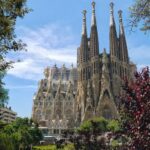 The Majestic Beauty of Sagrada Familia in Barcelona, Spain
The Majestic Beauty of Sagrada Familia in Barcelona, Spain Unable to Browse Internet for Real Estate Listings.
Unable to Browse Internet for Real Estate Listings.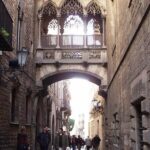 Barcelona's Gothic Quarter: Roman Roots
Barcelona's Gothic Quarter: Roman Roots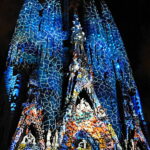 Sagrada Familia: Enchanting Night Illumination
Sagrada Familia: Enchanting Night Illumination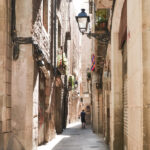 Discover Gothic Quarter's winding alleys: perfect for getting lost and finding hidden gems.
Discover Gothic Quarter's winding alleys: perfect for getting lost and finding hidden gems.If you want to know other articles similar to Gothic Quarter: Decline and Revitalization you can visit the category WHERE YOU CAN GO.
Deja una respuesta

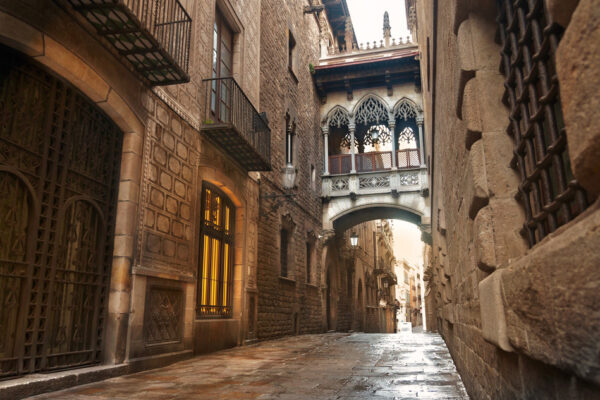








Read more!